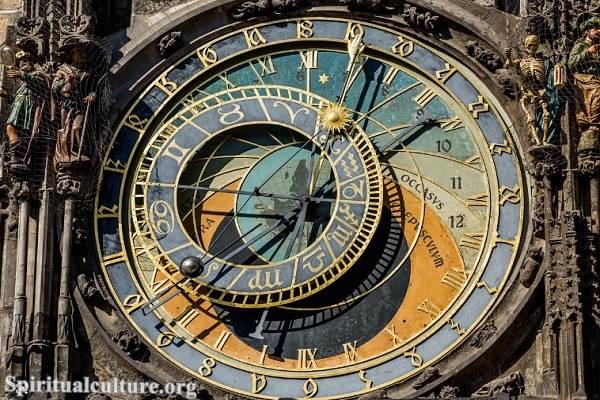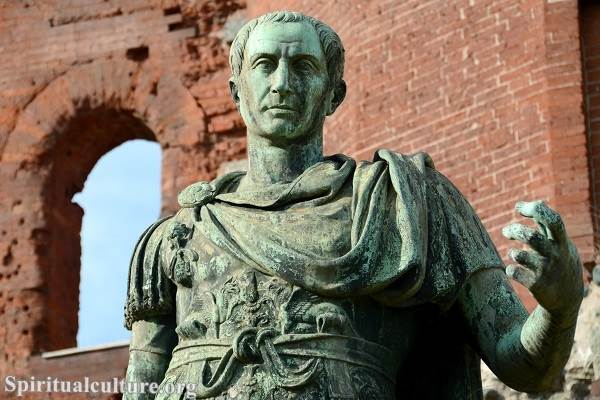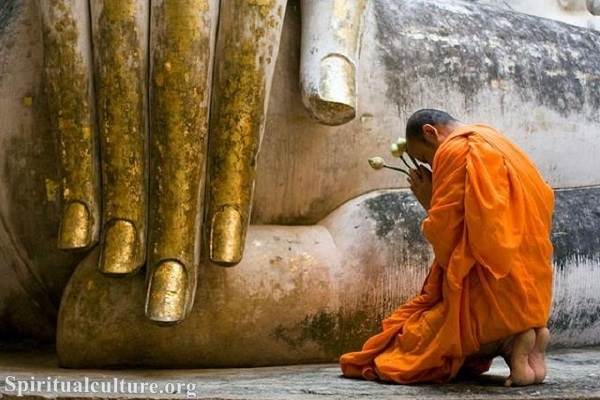Siddhartha Gautama’s journey from a sheltered prince to an enlightened teacher has inspired millions, offering a path to spiritual awakening and inner peace.
In this article, Spiritual Culture delves into the life, quest, enlightenment, teachings, and enduring legacy of Siddhartha Gautama, exploring how his message remains relevant in modern society.
Early Life
Birth and Family Background
Siddhartha Gautama was born around 563 BCE in Lumbini, in present-day Nepal, into the Shakya clan. His father, King Suddhodana, was the ruler of the small but prosperous kingdom of Kapilavastu. His mother, Queen Maya, was a devout and noble woman who, according to Buddhist tradition, had a miraculous dream before his birth. The dream involved a white elephant entering her womb, symbolizing the birth of a great being. Siddhartha was born into a life of luxury and privilege, but this comfort would later become a source of deep inner conflict.
Prophecies at Birth
At Siddhartha’s birth, it was foretold that he would either become a great king or a revered spiritual leader. This prophecy profoundly influenced his father, who hoped his son would follow in his footsteps and rule the kingdom. To ensure this, King Suddhodana shielded Siddhartha from the harsh realities of life, surrounding him with only beauty, youth, and pleasure. The king believed that if Siddhartha never witnessed suffering, he would have no reason to renounce his princely duties.
Upbringing and Education
Growing up in the royal palace, Siddhartha received the finest education. He was trained in various arts, sciences, and martial skills befitting a prince. Despite his father’s attempts to keep him away from spiritual matters, Siddhartha was naturally inclined towards contemplation and introspection. At the age of sixteen, he married Yasodhara, a beautiful and wise woman, with whom he had a son, Rahula. Despite his apparent happiness, Siddhartha felt a deep, inexplicable yearning that would eventually lead him to seek answers beyond the palace walls.
Quest for Enlightenment
Reasons for Renunciation
Siddhartha’s quest for enlightenment began with what are known as the “Four Sights.” At the age of 29, despite his father’s efforts to protect him, Siddhartha ventured beyond the palace and encountered an old man, a sick person, a corpse, and an ascetic. These sights exposed him to the inescapable realities of aging, illness, death, and spiritual seeking. Disturbed and disillusioned by the transient nature of life, Siddhartha decided to renounce his princely life in search of a deeper truth that transcends suffering.
Early Spiritual Practices
Leaving behind his royal life, Siddhartha began his journey as a wandering ascetic. He sought out the most esteemed spiritual teachers of his time, hoping to find the answers to the profound questions that troubled him. Siddhartha studied under two renowned meditation teachers, Alara Kalama and Uddaka Ramaputta, mastering their techniques of deep meditative absorption, known as jhanas. However, he soon realized that while these practices offered temporary peace, they did not provide a permanent solution to the problem of suffering.
Meeting with Meditation Teachers
Although Alara Kalama and Uddaka Ramaputta taught Siddhartha advanced states of meditation, these teachings fell short of leading him to enlightenment. Siddhartha learned to achieve deep states of trance-like concentration, but he was still not satisfied. Recognizing that the ultimate truth could not be found in these practices alone, Siddhartha continued his search, turning towards more extreme forms of spiritual discipline.
Ascetic Practices
Extreme Austerities
In his pursuit of enlightenment, Siddhartha joined a group of ascetics who practiced severe austerities, believing that self-mortification would lead to liberation. For six years, he subjected his body to extreme forms of deprivation, such as intense fasting and prolonged breath control. He nearly starved himself to death, reducing his body to skin and bones. Despite his immense self-discipline, Siddhartha realized that these extreme practices were leading him away from, rather than toward, enlightenment.
Realization of the Middle Way
On the brink of death from starvation, Siddhartha reconsidered his approach. He realized that neither indulgence in luxury nor self-mortification could lead to true enlightenment. Instead, he embraced what he called the “Middle Way”—a path of moderation that avoids the extremes of sensual pleasure and self-denial. This realization marked a turning point in his quest and laid the foundation for his future teachings.
Enlightenment Experience
Meditation under the Bodhi Tree
With renewed determination, Siddhartha made his way to Bodh Gaya, where he vowed to sit in meditation under a Bodhi tree until he attained enlightenment. He entered deep meditation, focusing his mind with unyielding concentration. For days, he remained in this state, exploring the nature of existence, the causes of suffering, and the path to liberation.
Confrontation with Mara
As Siddhartha approached enlightenment, he was confronted by Mara, the demon of illusion, who sought to distract and deter him from his goal. Mara tempted Siddhartha with visions of beautiful women, terrifying monsters, and doubts about his worthiness. Siddhartha remained steadfast, recognizing Mara’s temptations as mere illusions. By refusing to succumb, he demonstrated the power of mindfulness and concentration, ultimately overcoming the forces of ignorance and desire.
Attaining Buddhahood
On the full moon of May, Siddhartha attained enlightenment and became the Buddha, “the Awakened One.” In this moment of profound realization, he understood the nature of suffering, the causes of its arising, and the path to its cessation. The Buddha had discovered the ultimate truth that liberates beings from the cycle of birth, death, and rebirth (samsara). Having attained nirvana, a state of perfect peace and freedom from suffering, he resolved to share his insights with the world.
Teachings of Siddhartha Gautama
Core Concepts of Buddhism
The Buddha’s teachings, known as the Dharma, revolve around key principles that guide practitioners on the path to enlightenment. Central to his doctrine is the idea of impermanence (anicca), the inherent unsatisfactoriness of life (dukkha), and the concept of non-self (anatta), which asserts that there is no permanent, unchanging soul. These teachings challenge the common notions of existence and encourage followers to cultivate wisdom, ethical conduct, and mental discipline.
The Four Noble Truths
The Buddha’s first sermon after his enlightenment outlined the Four Noble Truths, which form the foundation of Buddhism:
- The Truth of Suffering (Dukkha): Life is inherently unsatisfactory and filled with suffering.
- The Truth of the Cause of Suffering (Samudaya): Suffering arises from craving and attachment.
- The Truth of the End of Suffering (Nirodha): It is possible to end suffering by eliminating craving.
- The Truth of the Path to the End of Suffering (Magga): The Noble Eightfold Path leads to the cessation of suffering.
The Noble Eightfold Path
The Noble Eightfold Path is the Buddha’s practical guide to ethical and mental development, leading to enlightenment. It consists of:
- Right Understanding: Comprehending the true nature of reality.
- Right Intent: Cultivating thoughts of renunciation, goodwill, and harmlessness.
- Right Speech: Speaking truthfully and kindly.
- Right Action: Acting in ways that are morally sound and beneficial.
- Right Livelihood: Earning a living without harming others.
- Right Effort: Making a persistent effort to cultivate wholesome qualities.
- Right Mindfulness: Being aware and attentive to the present moment.
- Right Concentration: Developing deep focus through meditation.
Influence and Legacy
Establishment of the Sangha
Following his enlightenment, the Buddha established the Sangha, a community of monks and nuns dedicated to practicing and preserving his teachings. The Sangha played a crucial role in the dissemination of Buddhism, ensuring that the Dharma was transmitted through generations.
Spread of Buddhism
Buddhism quickly spread across the Indian subcontinent and beyond, gaining followers from all walks of life. King Ashoka, a powerful Indian emperor, became a significant patron of Buddhism in the 3rd century BCE, promoting its teachings across Asia. Over time, Buddhism expanded to regions such as Southeast Asia, East Asia, and Central Asia, evolving into various schools and traditions.
Impact on Religion and Philosophy
The Buddha’s teachings have had a profound impact on both religious thought and philosophical inquiry. Buddhism’s emphasis on mindfulness, compassion, and non-violence has influenced numerous spiritual practices and ethical systems. Philosophically, the concepts of impermanence, non-self, and dependent origination have sparked deep reflections on the nature of reality and existence.
Historical Context
Timeline of Life Events
Siddhartha Gautama’s life unfolded in the context of ancient India during the 6th to 4th centuries BCE. His birth, renunciation, enlightenment, and subsequent teachings occurred in a time of significant social and religious transformation. The exact dates of his life remain uncertain, but key events are traditionally marked as follows:
- Birth: c. 563 BCE in Lumbini.
- Renunciation: c. 534 BCE at age 29.
- Enlightenment: c. 528 BCE at age 35.
- Death: c. 483 BCE at age 80.
Cultural and Political Environment
The period in which Siddhartha lived was marked by the rise of new religious movements and philosophical schools, challenging the dominance of Brahmanical orthodoxy. The region was also characterized by emerging kingdoms, political shifts, and growing trade routes, which facilitated cultural exchange. This environment provided fertile ground for the spread of the Buddha’s revolutionary ideas, which questioned the established social and religious order.
Conclusion of Siddhartha’s Life
Later Teachings and Travels
After attaining enlightenment, the Buddha spent the next 45 years teaching the Dharma across northern India. He traveled extensively, sharing his insights with people of all social backgrounds, from kings to beggars. His teachings emphasized the importance of ethical conduct, mental discipline, and wisdom as the path to liberation. The Buddha’s compassion and wisdom attracted a large following, and his teachings continued to evolve in response to the needs of his disciples.
Death and Parinirvana
At the age of 80, the Buddha passed away in Kushinagar, achieving Parinirvana, the final release from the cycle of birth and death. His death marked the end of his earthly existence but also solidified the legacy of his teachings. The Buddha’s last words, as recorded in the Mahaparinibbana Sutta, were a reminder of impermanence: “All compounded things are subject to decay. Strive on with diligence.”
Relevance in Modern Society
Contemporary Interpretation of Teachings
The Buddha’s teachings continue to resonate in the modern world, offering timeless wisdom on the human condition. In an age of rapid change and widespread suffering, the principles of mindfulness, compassion, and non-attachment are increasingly embraced by people seeking inner peace and clarity. Practices such as mindfulness meditation, rooted in Buddhist tradition, have become mainstream, helping individuals manage stress, improve mental health, and cultivate a deeper sense of presence.
Influence on Modern Spiritual Practices
Buddhism has significantly influenced modern spiritual practices, particularly through the integration of meditation into daily life. The Buddha’s emphasis on direct experience and self-inquiry encourages a personal, experiential approach to spirituality. Additionally, the ethical teachings of Buddhism, such as non-harming and compassionate action, align with contemporary values of social justice, environmental stewardship, and global responsibility.
Conclusion
Siddhartha Gautama’s journey from prince to Buddha is a story of profound transformation and spiritual awakening. His teachings have not only shaped the course of history but continue to offer a path to liberation for those seeking freedom from suffering. As Buddhism endures and evolves, the relevance of Siddhartha’s insights remains clear, guiding individuals and societies toward greater understanding, compassion, and inner peace.



